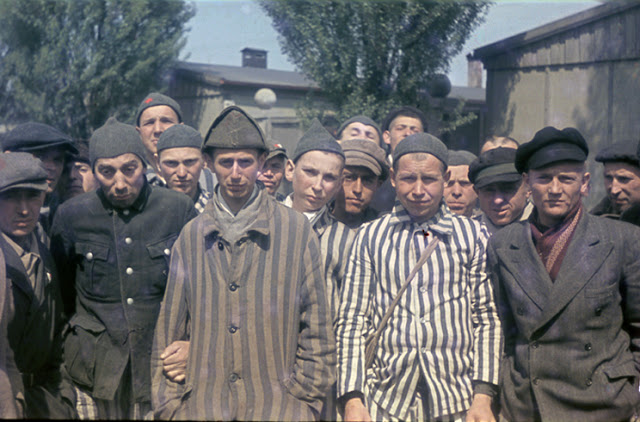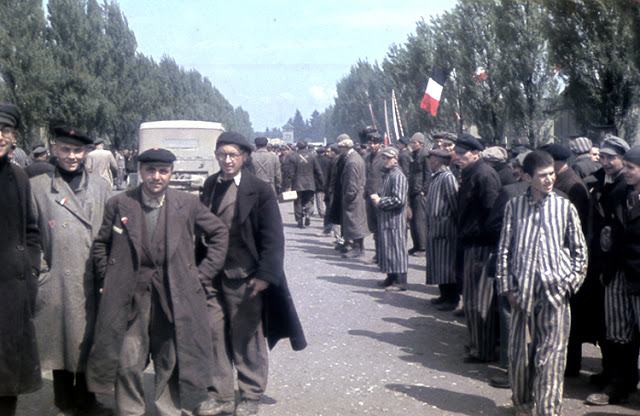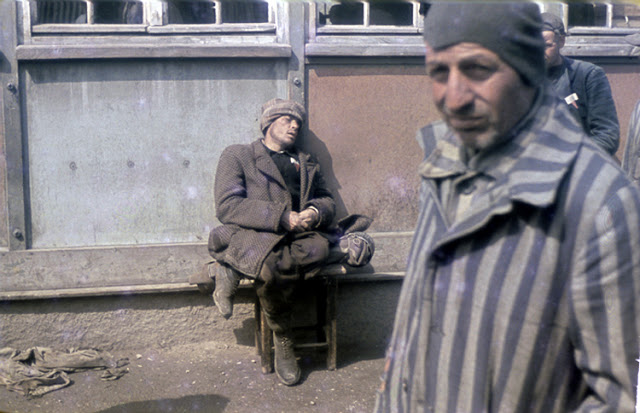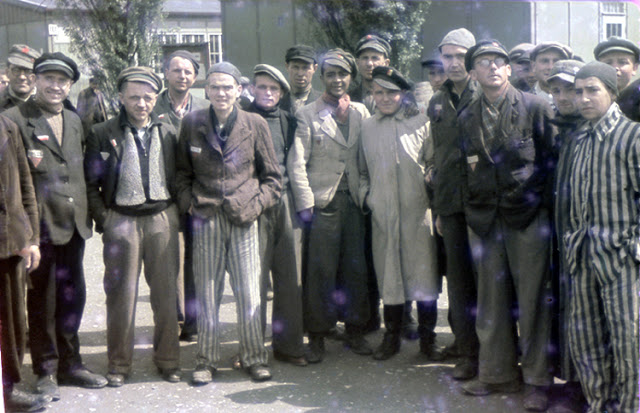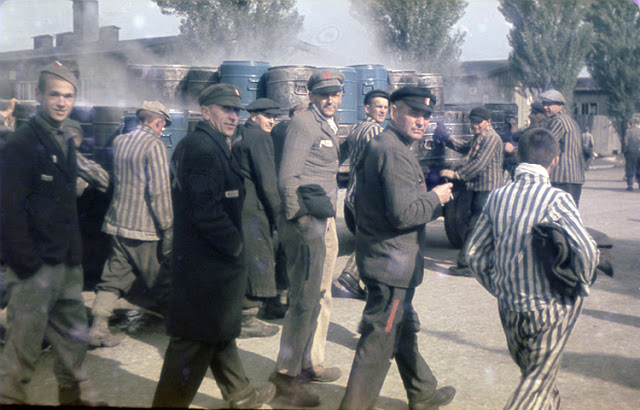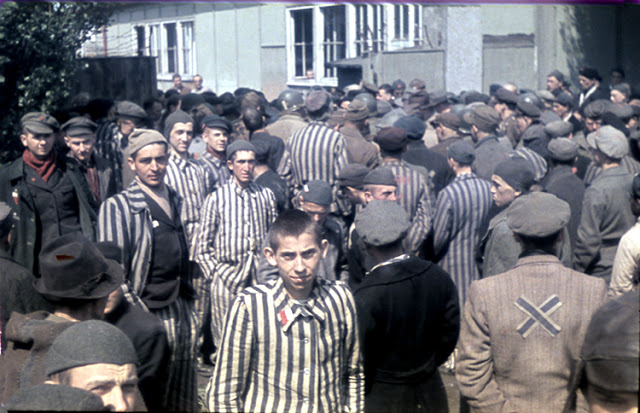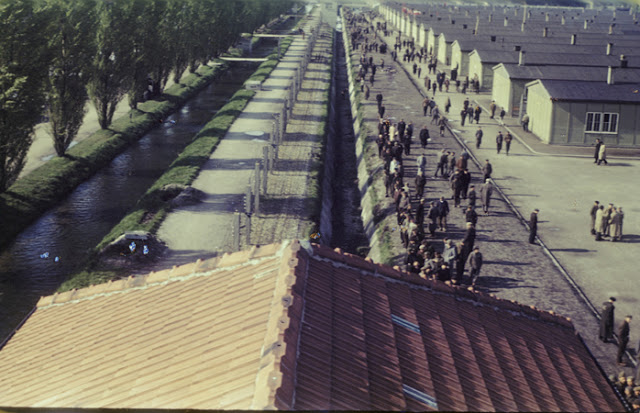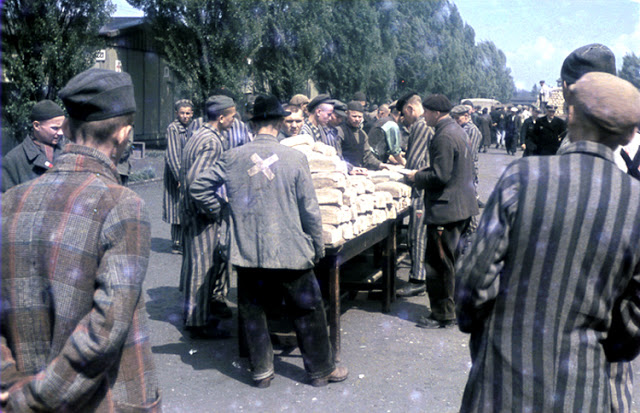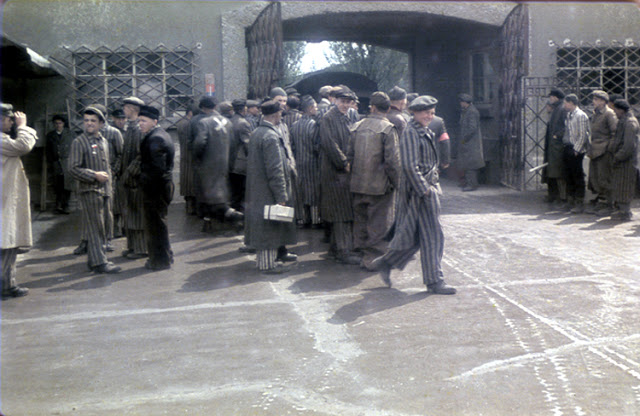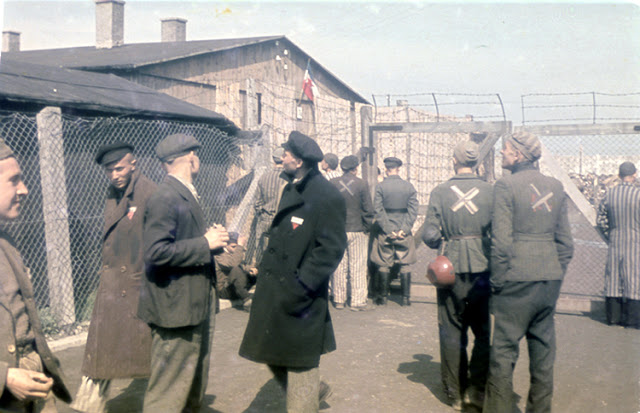Confused, exhausted and vulnerable, they may have somehow survived and are about to be free, but these chilling colour photographs show that for victims of the Nazis’ concentration camps there seemed little to celebrate as the Allies arrived.
The never before seen images show the liberation of Dachau, the first of the thousands of concentration camps that sprang up across Germany after the Nazis swept into power.
Established in March 1933, just two months after Hitler became Chancellor, Dachau was built to house political prisoners and by the end of the year around 4,800 mainly communists, social democrats and union officials, had been incarcerated there. Over the years that followed, the number of inmates was swelled as other ‘undesirables’, such as homosexuals, Jehovah’s Witnesses, gypsies, criminals and of course Jews were sent there.
Persecuted: These colour photos show the liberation of Dachau. The first of the thousands of concentration camps that sprang up across Germany after the Nazis rose to power
Some of the men are in uniform and those that aren’t appear bedraggled and unkempt
This image shows an exhausted prisoner asleep against a wall. The camps were a vital terror tool wielded by the SS and SA
‘Undesirables’: When Hitler was appointed chancellor in 1933 he quickly incarcerated those he saw as a threat. As his power grew, so did the number of concentration camps
After liberation, the camp was used by the US Army as an internment camp. It was also the site of the Dachau Trials for German war criminals, a site chosen for its symbolism. In 1948 the Bavarian government established housing for refugees on the site, and this remained for many years. Among those held in the Dachau internment camp set up under the American army, were Elsa Ehrich, Maria Mandl, and Elisabeth Ruppert.
The Kaserne quarters and other buildings used by the guards and trainee guards were converted and served as the Eastman Barracks, an American military post, for many years. It had its own elementary school: Dachau American Elementary School, a part of the Department of Defense dependent school system.
After the closure of the Eastman Barracks, these areas are now occupied by the Bavarian Bereitschaftspolizei (rapid response police unit)
Dachau would become the prototype for the thousands of concentration camps that sprang up across Germany during the Nazi era. The camp layout and daily routine was widely copied. It was also a training centre for SS concentration camp guards.
Shock and disbelief: Prisoners are seen milling around the grounds of Dachau after its liberation by American forces on April 29, 1945
The austere accommodation the prisoners were forced to live in can be seen on the right, while the barbed wire fence can be seen on the left
Bread is doled out among the prisoners. Starvation was itself a weapon used on the inmates
SS Lieutenant General Theodor Eicke was appointed to oversee the Concentration Camps by Himmler in 1933
German authorities established camps all over Germany to handle the masses of people arrested as alleged subversives
